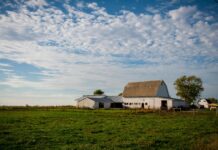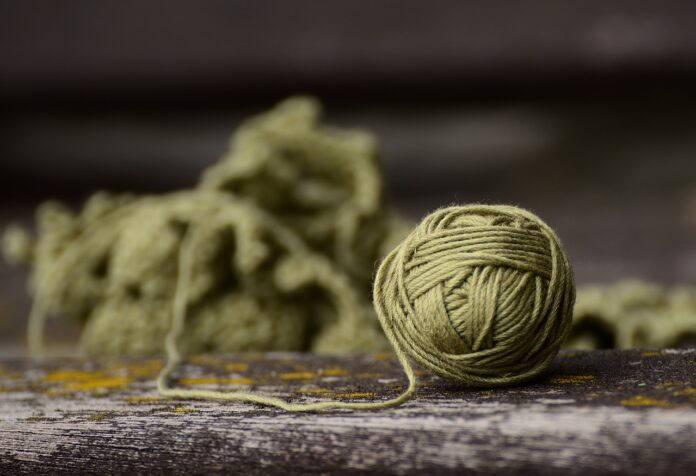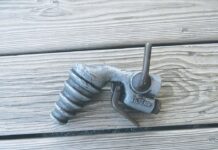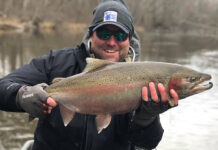Last year, I sent the best of my fleeces to a mill to be spun into yarn for the first time. The moment I held one of the warm, squishy skeins, I knew all the hard work had been worth it. As I wrote in a column last August, “Until this summer, I had never worn anything knit or woven from my own sheep’s fleeces. The promise of that initial infatuation has blossomed into something I could never have imagined — a reciprocity that feels life-sustaining and ancient because it is. When I look out at my flock of sheep who provide me and my family with companionship, sustenance and warmth, I understand that my love and care for them isn’t one-sided. This way of life loves me back.”
It is, therefore, no surprise that I was enthusiastically looking forward to shearing and sending the fleece to the mill again this spring. Until we moved the flock to a new pasture one morning last fall, that is, and they immediately found what my cursory searching had not: a giant patch of cockleburs hidden in the tall grass. How they all managed to get so thoroughly burred-up in just a few hours will forever remain a mystery, but when I came back to check them later that afternoon, I was devastated.
Fast forward to a few weeks ago, the sheep were shorn, the fleeces spread across my yard as I attempted to sort through them and find enough non-burred wool to send to the mill. Between frustrated outbursts, where I cursed myself for not checking that pasture more thoroughly, I discovered something surprising. After years of obsessing over different breeds to find the “perfect” sheep for my small operation, the wool that was visibly superior to all the others was from a one-eyed Targhee ewe named Hildy, a breed I’d moved away from raising. And it wasn’t just because the crimp and shorter staple length made it easier to get burrs out. Standing in a yard full of wool, I couldn’t deny that if I wanted to grow my fiber business, I really needed more Targhee genetics back in the flock.
This turned out to be dangerous information and was the reason I found myself hurtling down the road last Tuesday with five newborn Targhee lambs from an operator with a great reputation and an overabundance of bums in the back of my Subaru hatchback. I’d consulted my fiber friends, and everyone agreed this was a great business decision. Even my daughter, who is not yet a fiber connoisseur, gasped gleefully when she saw the babies, “They look like fluffy clouds!”
Which brings us to the present day. I haven’t slept in a week, and I went nearly that long without showering because, well, what’s the point? Every few hours, around the clock, I march out to the barn and get covered in lamb poop, slobber and spilt milk. Just as I managed to forget the luxurious quality of a well-bred Targhee’s wool, I also managed to forget why I had decided to move away from that breed in the first place. I originally started searching for so-called “unimproved breeds” after a disastrous year of lambing out a flock of mostly Targhee ewes when I ended up with so many bums because the moms were negligent or the babies couldn’t figure out nursing, I swore I was getting out of shepherding altogether. The breeds that make up most of my flock now — Clun Forest, Icelandic and Finnsheep — may not have great wool, but are blessed with excellent parenting instincts and lots of milk and, unlike Targhees, are not (as the old shepherding adage goes) “born looking for a place to die.”
I’m not sure what the moral of this story is, other than having a poor memory is a real liability. If my track record is anything to go by, however, I will have completely forgotten about these difficulties by next spring when shearing comes along and will be thrilled with my decisions. Let’s just hope I don’t also forget to check for burrs in the meantime.













